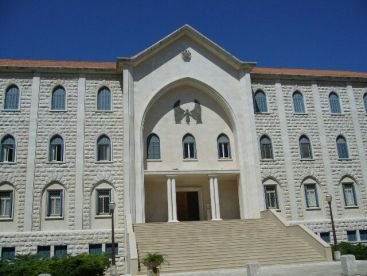Growth and internationalisation of the Congregation of the Holy Family
The congregation grew at a pace. Young women from modest backgrounds answered the call and trained to dedicate themselves to diverse social services. They became the schoolmistresses, nurses and religious education teachers of villages and parishes. In the early 20th century, the congregation numbered 100 nuns and 17 educational and collective establishments. Their destiny is bound with the history of Mount Lebanon, then Lebanon, where they share with the populations the good and bad times. During the First World War, the sisters were noted for their action in aid of the many victims of the famine that took the lives of more than half of the mountain folks.
From its motherhouse at Ebrine, Batroun, the congregation grew and spread throughout Lebanon from its northernmost borders with Syria to its southernmost border with the Holy Land.


Its first establishment was St Joseph School in Byblos, built in distinctive 19th century architecture. Gradually, new generations of sisters moved away from their original centre in Lebanon to settle in Syria. There, they founded seven establishments, counting primary and secondary schools as well as homes for the sick and the old, notably in the region of Latakia. Open in the 30s, those schools were nationalised and taken over by the Syrian government and the Baath regime in 1967. The sisters did not abandon Syria, the bans imposed on private education notwithstanding. Instead, they set up hospitals and pastoral centres where they have kept up their activity, even in the context of the civil war subsequent to the 2011 demonstrations.

In Lebanon, they were severely tested by the wars that ravaged the country as from 1975. The Congregation of the Holy Family suffered human and material losses. It rebuilt promptly what had been destroyed. Its ruling body also decided to follow where Lebanese had chosen to migrate. Upon reaching Australia they have set up new foundations. At the beginning of the 21st century, four communities ran two schools (primary and secondary), two care homes and an establishment for disabled children.






